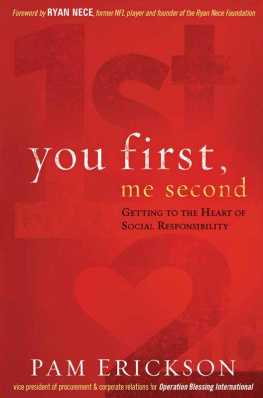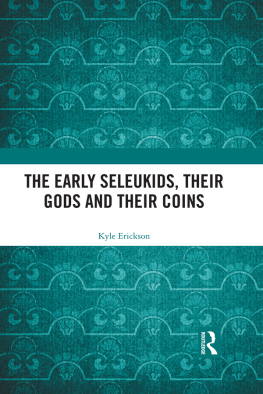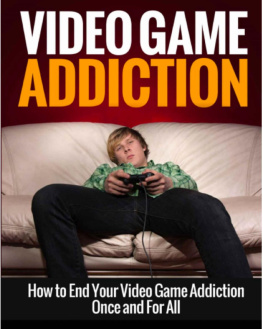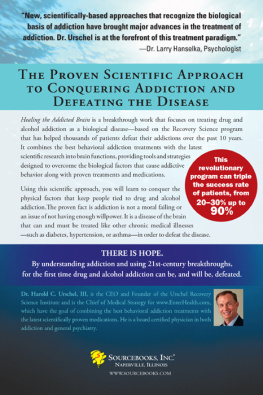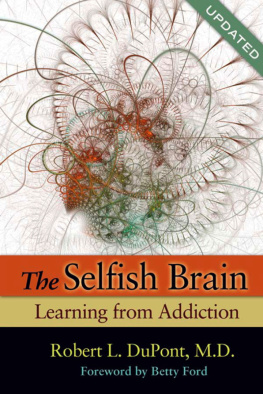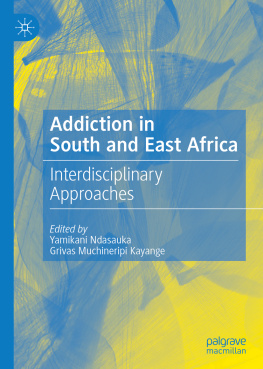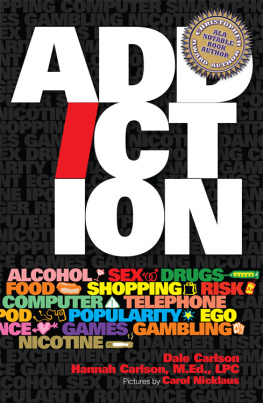Anyone with a successful family knows that hard work, frequent travel, and periods of serenity happen only because of the sacrifices of a loving spouse and children. To my most supportive and beautiful wife, Eunice, and the children, their spouses, and our grandchildren: Steig (Sheri and Emma); Dirk (Jennifer); Annika Bennett (Bill, Hunter and Luke); and Hans (Mandy and Hayden)this book is dedicated to you.
Abbreviations
A.A. - Alcoholics Anonymous
ADH - Alcohol dehydrogenase
ADHD - Attention deficit hyperactivity disorder
ALDH - Aldehyde dehydrogenase
BAC - Blood alcohol concentration
BU - Beverage unit
CB - Cannabinoid receptor
CBT - Cognitive behavioral therapy
CNS - Central nervous system
COGA - Collaborative Study on the Genetics of Alcoholism
CRF - Corticotropin releasing factor
CT - Computerized tomography
DA - Dopamine
DAT - Dopamine transporter
DNA - Deoxyribonucleic acid
DRD2 - Dopamine receptor (type) D2
DSM-IV - Diagnostic and Statistical Manual of Mental Disorders, Fourth Edition
DTs - Delirium tremens
DUDs - Drug-use disorders
DUI - Driving under the influence
DWI - Driving while intoxicated
ERP - Event-related potential
FAE - Fetal alcohol effects
FAS - Fetal alcohol syndrome
FASD - Fetal alcohol spectrum disorder
GABA - Gamma aminobutyric acid
GHB - Gamma hydroxybutyrate
GLU - Glutamate
5-HT - Serotonin
ICD-10 - International Classification of Diseases, Tenth Revision
LSD - Lysergic acid diethylamide
MAO - Monamine oxidase
MDMA- Methylenedioxy methamphetamine
MDS - Mesolimbic dopamine system
MET - Motivational enhancement therapy
MI - Motivational interviewing
M.M. - Moderation management
MRI - Magnetic resonance imaging (fMRI = functional MRI)
mRNA - Messenger ribonucleic acid
N.A. - Narcotics Anonymous
NAcc - Nucleus accumbens
NIAAA - National Institute on Alcohol Abuse and Alcoholism
NIDA - National Institute on Drug Abuse
NMDA - N-methyl-D-aspartate
OCD - Obsessive compulsive disorder
OPD - Other psychiatric disorders
PCM - Primary-care management
PET - positron emission tomography
PNS - Peripheral nervous system
PTSD - Posttraumatic stress disorder
QTL - Quantitative trait locus
RAS - Reticular activating system
RM - Recovery management
rRNA - Ribosomal ribonucleic acid
RVE - Research validity estimate
SERT - transporter
SIDS - Sudden infant death syndrome
SPECT - Single photon emission computerized tomography
SSRIs - Selective serotonin reuptake inhibitors
TBW - Total body water
TC - Therapeutic community
tRNA - Transfer ribonucleic acid
THC - Tetrahydrocannabinol
THIQs (TIQs) - Tetrahydroisoquinolines
TSF - facilitation
VTA - Ventral tegmental area
Preface
THE MOST EXCITING NEWS about the science of addiction is that neuroscience is playing a ground-breaking role in helping us clarify the exact causes of compulsive alcohol and other drug use. Neuroscience research on addiction involves an understanding of how drugs act on individual nerve cells as well as on large groups of nerve cells in the central nervous system. Research is also helping us clarify what addiction is, what it is not, and how it can be better treated. Unlike earlier alcoholism and addiction research, neurobiological research on addicting drugs is unique in that it interacts with so many other important areas: social work, psychology, sociology, medicine, pharmacology, physiology, genetics, brain imaging, epidemiology, and treatment research. Thus, this book covers, in order: (1) changes in the terminology and conceptualization of addiction that are emerging based on new neuroscience, genetic, and clinical findings, and that help us understand why one type of drug problem is a chronic medical brain disease; (2) the basics of neuroscience; (3) the neuroanatomy and function of brain reward sites; (4) the genetics of alcohol and other drug dependence; (5) the basic pharmacology of stimulants and depressants; (6) the basic pharmacology of alcohol; (7) the basic pharmacology of other drugs; (8) current and emerging treatments for chemical dependence and how neuroscience helps us understand the way they work; (9) how to evaluate the validity of science in this area and how to read and interpret new research findings; and (10) future research trends and important questions that addiction science should answer. The book closes with two appendices that provide supplemental information on alcohol (Appendix A) and other drugs (Appendix B).
The scientific conclusions that appear in this book are mine, and the story they tell is the result of over 30 years of addiction science research. Much of this research has substantiated the anecdotal reports told by those in recovery from the disease. When science agrees with real-life experience, and vice versa, the story is strengthened. Certainly, the story will change subtlety as the scientific evidence grows, and other scientists may draw somewhat different conclusions from those presented in this book. Some may suggest that I have misinterpreted the results of some scientific studies; others may say that I have missed key recent publications. Any omission of important research is unintentional: My goal is to accurately and articulately represent a cross-section of the scientific areas discussed in the text. The fact is that we have not yet solved the causes of drug problems, nor do we have all the answers to cure people. Thus, scientific conclusions are always open to challenge. The biggest challenge is for all of us to educate policy makers and to advocate for more alcohol and other drug research funding to find the final answers. No persons conclusions about the causes and best treatments for addictions are stronger than the weight of their scientific data, and more scientific data are urgently needed in this area!
Who This Book Can Help
Abuse of alcohol and illicit drugs affects millions of people on a daily basis (Hanson & Li, 2003). Over 8 million U.S. individuals meet the diagnostic criteria for alcohol dependence and another 5.6 million meet the criteria for alcohol abuse (Grant, Hasin, Chou, Stinson, & Dawson, 2004). In 2001, there were about 66.5 million tobacco smokers and 16 million illicit drug users (Grant et al., 2004). The U.S. economic cost of such abuse was estimated to be more than $484 billion per year, including $185 billion due to alcohol overuse, $138 billion due to smoking, and about $161 billion due to illicit drugs. Finally, of the more than 2 million U.S. deaths per year, around 1 in 4 is due to alcohol, tobacco, or illicit drug use.





